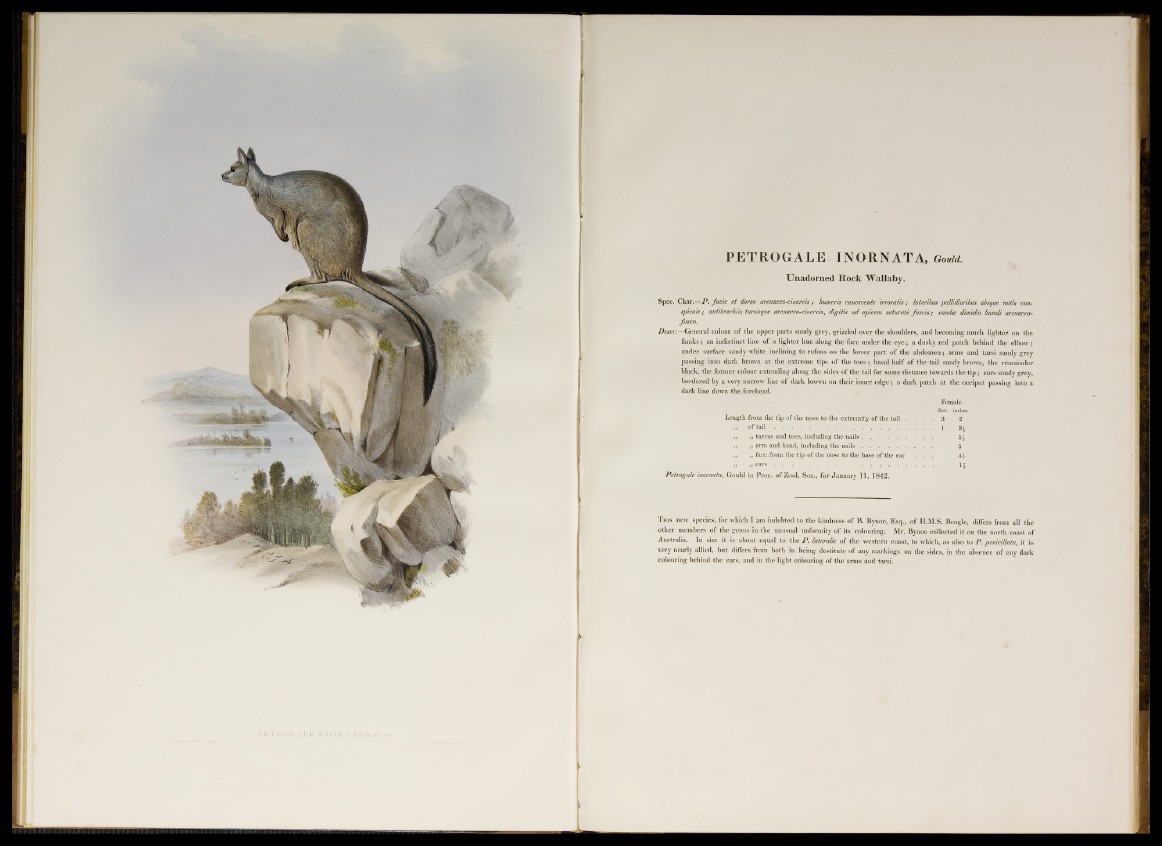
PETROGALE INORNATA, Gould.
Unadorned Rock Wallaby.
Spec. Char.—P . fa cie et dorso arenaceo-cinereis ; humeris canescente irroratis; lateribvs pallidioribus absque notis con-
spicuis; antibrachiis tarsisque arenaceo-cinereis, digitis ad apicern saturate fu sc is; caudce dimidio basali arenaceo-
fiisco.
Descr.—General colour o f the upper parts sandy grey, grizzled over the shoulders, and becoming much lighter on the
flanks; an indistinct line o f a lighter hue along the face under the ey e; a dusky red patch behind the elbow;
under surface sandy white inclining to rufous on the lower part o f the abdomen; arms and tarsi sandy grey
passing into dark brown at the extreme tips o f the to e s ; basal half o f the tail sandy brown, the remainder
black, the former colour extending along the sides o f the tail for some distance towards the tip ; ears sandy grey,
bordered by a very narrow line o f dark brown on their inner ed g e ; a dark patch at the occiput passing into a
dark line down the forehead.
Female.
feet, inches.
Length from the tip of the nose to the extremity of the tail . . . . 3 2
„ of t a i l ........................................................................................... i 31
„ „ tarsus and toes, including the n ails.............................. 5i
„ „ arm and hand, including, the nails ........................................ 5
„ „ face from the tip of the nose to the base of the ear . . . 40.
„ ,, e a r s .............................: ................................................ 1^.
Petrogale inornata, Gould in Proc. o f Zool. Soc., for January 11, 1842.
T his new species, for which I am indebted to the kindness o f B. Bynoe, Esq., o f H.M.S. Beagle, differs from all the
other members o f the genus in the unusual unformity o f its colouring. Mr. Bynoe collected it on the north coast of
Australia. In size it is about equal to the P . lateralis o f the western coast, to which, as also to P . penicillata, it is
very nearly allied, but differs from both in being destitute o f any markings on the sides, in the absence o f any dark
colouring behind the ears, and in the light colouring o f the arms and tarsi.